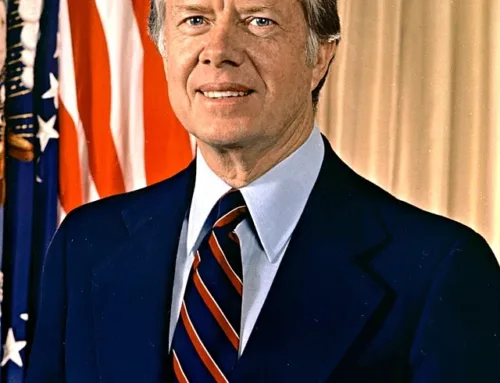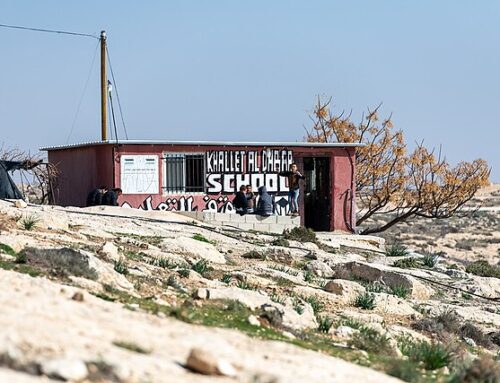What follows is a review essay by Thomas G. Mitchell, Ph.D., an independent scholar who frequently contributes articles of historical note. The subject of this review are two books by Walter Laqueur — “A History of Zionism” (MJF Books 1972, 2003) and “Dying for Jerusalem” (Sourcebook 2006) — and one by Benny Morris — “One State, Two States” (Yale University Press 2009):
Walter Laqueur, an Israeli-American historian who was born in what is today western Poland, grew up in Palestine/Israel and then emigrated to America in his early thirties, is one of the most prolific historians dealing with twentieth-century European history. He specializes in writing about Germany, Russia, and the Middle East. His A History of Zionism is a classic because of its combination of diplomatic history of the Zionist movement, discussion of the competing ideologies within Zionism, and thumbnail sketches of the leading Zionist figures. His second chapter on the forerunners of Zionism, the proto-Zionists of the nineteenth century is one of the best written accounts that I have read.
The first reason this book is worth reading by followers of this blog is the chapter on how the Zionist movement dealt with the Arab question in the 1920s. The Zionist leadership did not make much of an effort to sell Zionism to Palestinian Arabs. Rather it left the job up to the cultural Zionists of Brit Shalom, an organization that never numbered much more than a hundred members, most of whom were German-speaking immigrants from Central Europe who lived in Jerusalem. Their leading figure was Arthur Ruppin, who was instrumental in acquiring land and shaping policy for communal and cooperative settlements (kibbutzim and moshavim).
The defining belief of Brit Shalom and its later successor organization, Ihud, was that there should be a binational state in Palestine in which neither of the two peoples would dominate the other. It, unlike the Zionist movement, was willing to explore restrictions on Zionist immigration and a position of numerical inferiority within Palestine. But the Palestinian national movement, dominated by a Muslim ethos of religious superiority, never accepted a position of equality for non-Arabs. Until fairly recently, Arabs have seen Jews as exclusively a religious community, much like Reform Judaism used to define the Jews, but in distinction from traditional Orthodox definitions. The Palestinians believed in choking off immigration and dominating Palestine through sheer numbers.
Hebrew University President Judah Magnes, an American Reform rabbi who immigrated to Palestine after the Balfour Declaration, was close to Brit Shalom but never a member of it. But in the 1940s he joined its successor, Ihud. Ihud was more successful in that it was able to sell the idea of binationalism to Hashomer Hatzair, the leftist Zionist youth movement. But the sole Palestinian leader who was willing to commit on paper to binationalism, a cousin of Jamal Husseini and the Grand Mufti, Amin al-Husseini, was murdered within days on an order from his more fervent cousins. The other book by Laqueur, Dying for Jerusalem, is about important and colorful Jerusalem residents during the Mandate period, proviing details on Brit Shalom and Ihud that are not in the first book.
In One State, Two States, Benny Morris, the doyen of Israel’s “New Historians,” reviews the obstacles to a two-state solution in this short book. He sees the Palestinian demand for a right of return for refugees and Palestinian political divisions between secular nationalists of Fatah and the Islamists of Hamas as among the chief obstacles. He also sees many obstacles on the Zionist side. He concludes that these all combine to prevent a two-state solution for the foreseeable future. But he covers the same history of binationalism as Lacqueur, to back up his argument that the Palestinian one-staters are not really serious about binationalism, but rather just want to replace Israel with another Arab state.
There are several biographies of Magnes as well as of German-Jewish philosopher Martin Buber who was active with Magnes in Ihud. But if one is serious about Israeli-Palestinian peace one should concentrate on more mainstream figures.
American conservative journalist and intellectual William F. Buckley once famously advised conservatives that they should always work to nominate the most conservative electable Republican candidate. Those interested in peace should back the most conciliatory leader who can deliver a peace settlement. From 1971 to 2001 that was always a military politician in the Labor Party or, in the case of peace with Egypt, Menahem Begin. Since 2001, it has been the followers of Sharon in the Likud and Kadima. In the future it is likely to be another military politician.
The second reason for reading Laqueur’s Zionist history is that the search for Middle East peace is like Zionism. Zionism was always a very doubtful venture that often lacked both credibility and clear direction. Through sheer drive and perseverance, Zionist leaders were able to take advantage of very narrow windows in time– first in 1917-20, and then in 1945-48 — to turn tragedy into success. By reading the story in this light, one can see how an enduring commitment is necessary for the dream of peace to prevail.






Leave A Comment